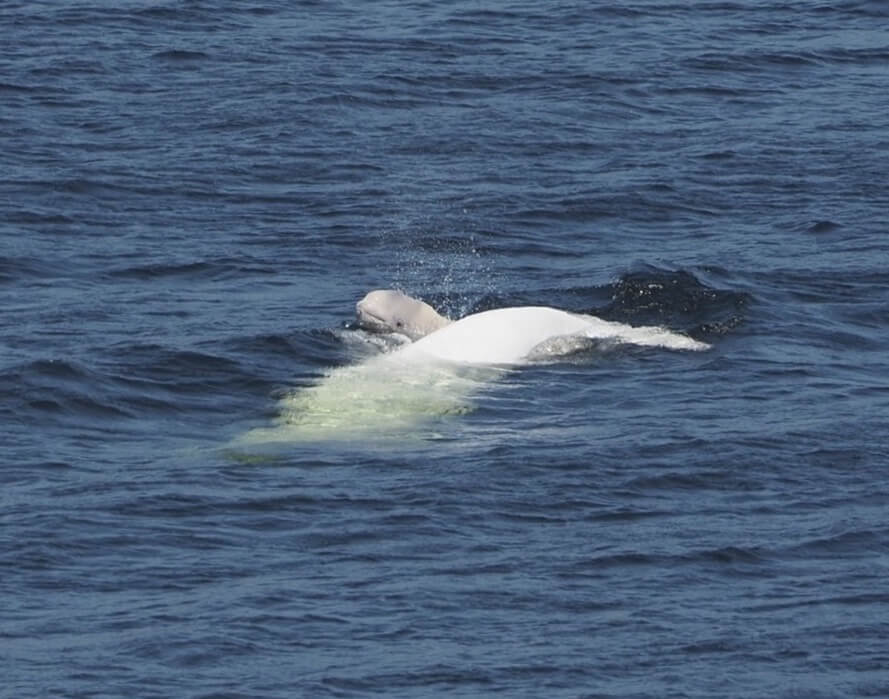Being mammals, whales have a lot more in common with us than you might think. From breathing to nursing to the structure of their skeleton, they even look like us right down to the navel. That’s right, just like humans, whales have a belly button! Located in the middle of their abdomen, this mark testifies to the presence of an umbilical cord that once attached the calf to its mother.
Where do belly buttons come from, anyway?
In mammals, an umbilical cord connects the fetus to the mother during gestation. Humans, cats, kangaroos, cows and even whales are all part of this class of animals that share certain characteristics such as the presence of mammary glands and hair.
The umbilical cord is a gel-like tube that allows for exchanges between the fetus and the placenta. The placenta, an organ attached to the wall of the mother’s uterus, provides the growing baby with the nutrients and oxygen it needs to develop. This organ also collects waste products and carbon dioxide produced by the fetus.
After birth, as the newborn is able to breathe and carry out its biological functions on its own, the umbilical cord is no longer needed. It will therefore be severed or cut. Not until some time after birth will the remains of the cord still attached to the newborn fall off and leave a mark on the abdomen. The navel, also called the umbilicus, is therefore the scar that results from the detachment of the umbilical cord!
The mark left by the umbilical cord, which is unique to each individual, is variably conspicuous from one species to another. Humans, for example, have a highly visible belly button compared to that of cats or dogs. For whales, the navel is rather easy to spot.
Who “cuts the cord”?
In humans, is is often one of the parents that cuts the umbilical cord. Unsurprisingly, this is not the case in other mammals. The umbilical cord often breaks naturally at birth. For land mammals, it may also happen that the female severs it herself with her teeth.
In whales, calves are born tail first and it is the separation of the calf from its mother, combined with the movements of the water, that causes the umbilical cord to break. The newborn can then move freely toward the water surface to take its first breath. Following birth, the placenta will be expelled and it seems that females generally let it float to the water surface. Some observations of this curious phenomenon (article in French) have already been made in certain places around the world.
The navel is therefore not unique to human beings! In fact, reptiles and even birds also have a similar mark on the abdomen, which is the result of the bond in the egg between the fetus and the yolk sac (which provides nutrients to the fetus). A recent study (article in French) has even shown that some species of dinosaurs may also have had a scar on their abdomen. It all goes to show that humans aren’t always as unique as we think!







